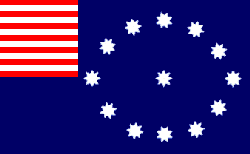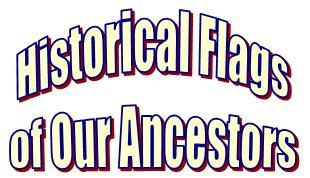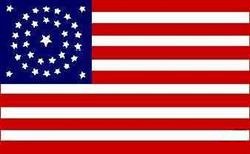Note: If an image ever fails to appear - refresh your page, it really is there
| NATO Signal Flags | International Organizations | North Altantic Treaty Organization | United Nations |
International Code of Signals and Flags
Individual images used on this page are the work of Chris Rickard
The International Code of Signals (ICS) is basically an international system of signals, words, and codes for use by vessels to communicate with each other while at sea. The use of words to vocally clarify letters is an important part of the system. This way signals can be clearly sent by flags, signal lamp (blinkers), semaphores, and electronics.
The International Code of Signals was first introduced in 1857 by the British Board of Trade as a means of maritime communications. Originally it had 17,000 signals using 18 flags. Today, it has been modified and adopted by most modern sea-faring nations, and uses symbols from nine major languages: including English, French, German, Italian, Japanese, Spanish, Norwegian, Russian and Greek.
|
The following are Alphabetical Flags
 Alfa |
 Bravo |
 Charlie |
 Delta |
 Echo |
 Foxtrot |
 Golf |
 Hotel |
 India |
 Juliett |
 Kilo |
 Lima |
 Mike |
 November |
 Oscar |
 Papa |
 Quebec |
 Romeo |
 Sierra |
 Tango |
 Uniform |
 Victor |
 Whiskey |
 X-ray |
 Yankee |
|
|
 Zulu |
|
|
The Following are Numeric (Numeral) Pennants
The following are Substitute Flags
The first substitute repeats the first flag above it in the same hoist, the second repeats the second, etc.
 1st Repeater |
 2nd Repeater |
 3rd Repeater |
Other Special ICS Pennants
| |
 ICS Code or Answering |
This flag is used to answer a flag signal or indicate all flags being used are ICS. It also can be used to represent a decimal point. |
Ship signal flags can also be grouped in pairs to make new combination meanings.
1. Single-letter signals which are very urgent, important, or common.
Examples:
| A |
|
- I have a diver down; keep well clear at slow speed. |
| B |
|
- I am carrying or discharging dangerous goods. |
| H |
|
- I have a pilot on board. *
|
(This flag is flown when a ship is under the temporary control of a local "maritime" pilot. Pilots are required in restricted waterways where there are congested waters or navigational hazards, such as harbors or river mouths. The pilot is technicality only an advisor, as the captain always remained in command of the vessel, but in most cases the captain will follow the advise of the pilot because of their knowledge of possible hazards.)
2. Two-letter signals for other messages - sometimes followed with a numeric (numeral) pennant to modify the message.
Examples:
| NC |
|
- I'm in danger. |
| ED |
|
- Your help signal was understood. |
| KP |
|
- Tow me to port |
| FO |
|
- I'm standing by you |
| PM |
|
- Follow me |
| KN |
|
- I can't tow you |
3. Three-letter signals beginning with "M" – these are the Medical Signal Codes.
Example:
| MAA |
|
- I request urgent medical advice. |
Of course, all these short hand messages, require a previous knowledge of them and a handy copy of the ICS code book on board. They can be especially handy if you don't speak the same language as the person you are attempting to communicate with.
|
- Special thanks to Chris Rickard for his expert help and advise on this page -
| Top of Page | NATO Signal Flags | International Organizations | North Altantic Treaty Organization | United Nations |
|










































